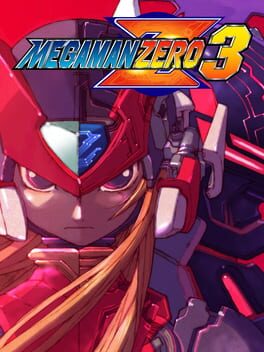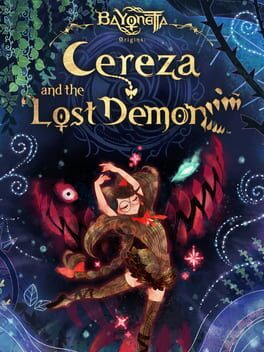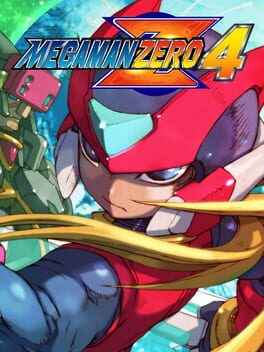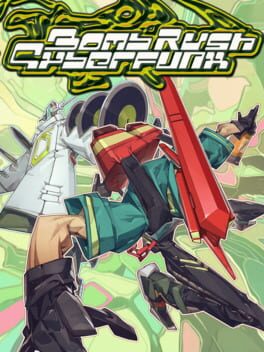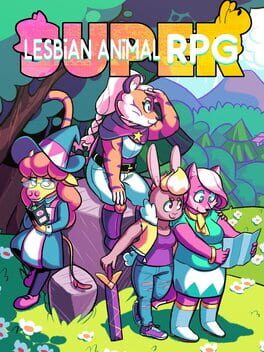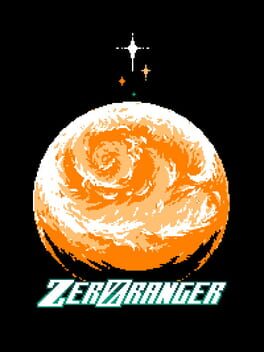Killjoy_Kora
BACKER
Tears of the Kingdom is an exercise in how much a game developer can get away with in recycling content. Potentially one of the most uninspired Zeldas ever made, TotK retreads everything Breath of the Wild did but worse in almost every way--save for the weapon fusion which is brilliant and I will miss in other titles. From the beginning, TotK kicks you off in a worse version of BotW's tutorial, but longer and less focused. Then it drops you in to the exact same map as the previous game with the only changes being sprinkles of copy-and-pasted content to keep you entertained. Unfortunately, several highlights from the previous game have been completely removed (such as the Guardians) to be replaced with... nothing. TotK as a game seems determined to pretend that it's a vastly more substantive experience than BotW, but fumbles the ball, especially in regards to the new ares: The Sky and The Depths.
The Sky and The Depths are emblematic of everything I dislike about this game (note that I still liked it, I'm just disappointed). The Sky, outside of the tutorial, is barely anything to write home about. A few scattered islands copied across the entire upper level of the map, so sparse as to make one think The Sky exists solely as marketing filler. And The Depths, a whole map the size of Hyrule but covered in absolutely nothing. The Depths, while very cool and frightening when you first discover them, are immediately undercut by how little there is to actually do there. And while TotK benefits from a better sidequest system than its predecessor, it completely fails on making exploration more interesting--or at all interesting.
And outside of the painfully mediocre and repetitive dungeons--all of which feature the exact same "open four locks and fight a boss" structure, lacking personality or any actual difficulty, become the most droll and dull parts of a game that cannot allow itself moderation. TotK is a good game, but not a great one; hampered by a need to reuse its ideas as much as possible, without introducing anything new or interesting, it becomes one of the most lackluster Zelda games I have ever played. I had a solid time, but I wish I had a great time instead.
The Sky and The Depths are emblematic of everything I dislike about this game (note that I still liked it, I'm just disappointed). The Sky, outside of the tutorial, is barely anything to write home about. A few scattered islands copied across the entire upper level of the map, so sparse as to make one think The Sky exists solely as marketing filler. And The Depths, a whole map the size of Hyrule but covered in absolutely nothing. The Depths, while very cool and frightening when you first discover them, are immediately undercut by how little there is to actually do there. And while TotK benefits from a better sidequest system than its predecessor, it completely fails on making exploration more interesting--or at all interesting.
And outside of the painfully mediocre and repetitive dungeons--all of which feature the exact same "open four locks and fight a boss" structure, lacking personality or any actual difficulty, become the most droll and dull parts of a game that cannot allow itself moderation. TotK is a good game, but not a great one; hampered by a need to reuse its ideas as much as possible, without introducing anything new or interesting, it becomes one of the most lackluster Zelda games I have ever played. I had a solid time, but I wish I had a great time instead.
1985
I really don’t know where to start this one.
On one hand, I have to respect the sheer audacity of 13 Sentinels’s structure, and the brilliant way in which it constantly throws the player between widely differing perspectives. This will be a spoiler-free review, as all of my reviews are. I played 13 Sentinels off the recommendation of a multitude of online games writing individuals who all praised the construction of Vanillaware’s latest release, and let’s say I was not disappointed when I finally got around to opening the game up. However, despite all those well spoken individuals’ opinions, I have never actually seen someone accurately summarize the game’s bold and confusing structure–especially since the game’s introduction/tutorial takes several hours to complete.
13 Sentinels is split between three disparate game modes: the first of which is a simple, side-scrolling adventure game (titles Remembrance) where you play as the titular 13 high schooler protagonists as you attempt to unravel the narrative. Almost every one of the 13 protagonists is a compelling enough character (sans Juro and Iori) who undergoes a radically different experience with time travel. The way this adventure game segment unfolds is mostly just aimless linear wandering until the characters start talking, and while the talking is very interesting, the walking part is a bit uninteresting. The second game mode is the Real Time Strategy component (titles Destruction) (all three of the game modes are accessible at the player’s discretion after completing the introduction), and the RTS game mode is where the main game actually is. Unfortunately, the RTS section takes place after everything in the adventure, so most of the dialogue doesn’t even make sense until you get to the end of the adventure. The third game mode is basically just an in-game encyclopedia documenting everything within the narrative you’ve learned and placing the timeline in a comprehensible order.
This comes to one of my main issues with a game I otherwise really enjoyed, which is how the non-linear storyline affected my ability to actually engage with the narrative. Without the context of Remembrance, Destruction feels very arbitrary and like it doesn’t add anything to the narrative–as the player is only privy to the emotions behind the principal cast insofar as they’ve played Remembrance. Despite this, I found the game’s sheer ambition to be the most compelling aspect of my playthrough, and that is the basis on which I would most recommend it. I was constantly shocked at the twists and turns of the storyline, and despite the underwhelming RTS combat, I found myself completely immersed within the journey of these 13 protagonists, and I will miss their presence.
On one hand, I have to respect the sheer audacity of 13 Sentinels’s structure, and the brilliant way in which it constantly throws the player between widely differing perspectives. This will be a spoiler-free review, as all of my reviews are. I played 13 Sentinels off the recommendation of a multitude of online games writing individuals who all praised the construction of Vanillaware’s latest release, and let’s say I was not disappointed when I finally got around to opening the game up. However, despite all those well spoken individuals’ opinions, I have never actually seen someone accurately summarize the game’s bold and confusing structure–especially since the game’s introduction/tutorial takes several hours to complete.
13 Sentinels is split between three disparate game modes: the first of which is a simple, side-scrolling adventure game (titles Remembrance) where you play as the titular 13 high schooler protagonists as you attempt to unravel the narrative. Almost every one of the 13 protagonists is a compelling enough character (sans Juro and Iori) who undergoes a radically different experience with time travel. The way this adventure game segment unfolds is mostly just aimless linear wandering until the characters start talking, and while the talking is very interesting, the walking part is a bit uninteresting. The second game mode is the Real Time Strategy component (titles Destruction) (all three of the game modes are accessible at the player’s discretion after completing the introduction), and the RTS game mode is where the main game actually is. Unfortunately, the RTS section takes place after everything in the adventure, so most of the dialogue doesn’t even make sense until you get to the end of the adventure. The third game mode is basically just an in-game encyclopedia documenting everything within the narrative you’ve learned and placing the timeline in a comprehensible order.
This comes to one of my main issues with a game I otherwise really enjoyed, which is how the non-linear storyline affected my ability to actually engage with the narrative. Without the context of Remembrance, Destruction feels very arbitrary and like it doesn’t add anything to the narrative–as the player is only privy to the emotions behind the principal cast insofar as they’ve played Remembrance. Despite this, I found the game’s sheer ambition to be the most compelling aspect of my playthrough, and that is the basis on which I would most recommend it. I was constantly shocked at the twists and turns of the storyline, and despite the underwhelming RTS combat, I found myself completely immersed within the journey of these 13 protagonists, and I will miss their presence.
2003
Despite my relatively low ranking, I find Mega Man Zero 2 to be a vast step-up from its predecessor. While the first game was highly limited in its ability to produce the difficult to grasp concept of “fun,” the sequel actually attempts to be an enjoyable game–and even partially succeeds. Mega Man Zero 2 has, despite some bizarre design decisions, much more coherent and structured level design alongside a marginally better upgrade system.
However, that upgrade system is limited by the fact that the game only allows you to obtain better weapons and upgraded forms by getting high scores and fulfilling arbitrary achievement requirements on your first try through levels. While I can see the appeal in a challenge based game where replayability is clearly a focus, it is brought down by an exceedingly wordy story that has no love for the time of the player. While I played the (graciously added) save-assist version of Zero 2 via the Legacy Collection, I still found myself infuriated at how long dialogue would play before fights.
I am excited to play Zero 3 next, as that might be the ultimate culmination of a series that’s main inspiration seems to be Mega Man X6 for some reason.
However, that upgrade system is limited by the fact that the game only allows you to obtain better weapons and upgraded forms by getting high scores and fulfilling arbitrary achievement requirements on your first try through levels. While I can see the appeal in a challenge based game where replayability is clearly a focus, it is brought down by an exceedingly wordy story that has no love for the time of the player. While I played the (graciously added) save-assist version of Zero 2 via the Legacy Collection, I still found myself infuriated at how long dialogue would play before fights.
I am excited to play Zero 3 next, as that might be the ultimate culmination of a series that’s main inspiration seems to be Mega Man X6 for some reason.
God, I wish I could have just skipped to the sequels. Uncharted 1 is good for what it is, but its strongest aspect is far from the constant, repetitive, and uninspired jungle covershooting. The writing is so stellar, and the main characters are so fun to watch as their banter comes across so natural that it makes me actively resent how boring and repetitive the combat and villains are.
And like holy shit are these villains uninspired and lame. An unironic evil British dude. Like come on. I have much higher expectations for the sequels. Nate, Elana, and Sully are all great though and I’m very excited to see them in a better game.
And like holy shit are these villains uninspired and lame. An unironic evil British dude. Like come on. I have much higher expectations for the sequels. Nate, Elana, and Sully are all great though and I’m very excited to see them in a better game.
2004
This feels like the game Inti Creates was trying to make the whole time. From the massive improvement of the upgrade system, tying upgrades to exploration instead of rank, and the fact that bosses are actually limited to the screen size of the GBA, this makes the best of the Inti Creates Mega Man games so far.
Unlike in the previous two titles (or i’m just stupid) you can now skip dialogue during bossfights, which makes for a massive quality-of-life improvement as the bosses are all more playable. While the story is still far too big for its britches, it is far more enjoyable now that I don’t have to sit through endless and unskippable cutscenes every time I need to try a bossfight again. The upgrade system now having far more customization is also a welcome change.
I don’t know if I will ever replay Zero 3, but I would actually consider it unlike its less-than-average predecessors.
Unlike in the previous two titles (or i’m just stupid) you can now skip dialogue during bossfights, which makes for a massive quality-of-life improvement as the bosses are all more playable. While the story is still far too big for its britches, it is far more enjoyable now that I don’t have to sit through endless and unskippable cutscenes every time I need to try a bossfight again. The upgrade system now having far more customization is also a welcome change.
I don’t know if I will ever replay Zero 3, but I would actually consider it unlike its less-than-average predecessors.
This would have been a perfect game for the Nintendo DS. Which isn’t to say that it isn’t already fantastic on the Switch, but that I can absolutely imagine it as an exemplar of the DS’s controls–imagine being able to control Cheshire with the touch pad and Cereza with the D-pad. It would have been perfect for the system. Reminds me of Phantom Hourglass or Okamiden in terms of its artful, almost watercolor aesthetic. I believe this game is technically supposed to be a metroidvania, but it’s far different in perspective and design than any metroidvania I’ve ever played–which is why I would go about thinking of it as its own thing. I cannot recommend this game enough.
Cereza and the Lost Demon is such a sincere and out-of-nowhere type of game, and I was shocked at the quality. I feel like this is a fantastic example of what we can get from major studios if they aren’t trying to make “realistic” games for the masses. The combat is delightful on top of fun navigation–despite the nightmare that is the main map interface–and the writing is splendid. Not the best writing I’ve ever seen in a game, but then again, how many games even have “good” writing.
The main point of appeal would be the relationship between Cereza and Cheshire, which slowly develops not only in the narrative, but also in the small idle animations as well as level-up animations and in the music of each area. The way the devs have put this sweet and adorable growth of the two’s strange relationship is so charming and utterly delightful, and if the rumors of this being the “start of a new series” are true, I would absolutely be first in line.
Also some of those bossfights are absolutely jaw-dropping. Like holy shit.
Cereza and the Lost Demon is such a sincere and out-of-nowhere type of game, and I was shocked at the quality. I feel like this is a fantastic example of what we can get from major studios if they aren’t trying to make “realistic” games for the masses. The combat is delightful on top of fun navigation–despite the nightmare that is the main map interface–and the writing is splendid. Not the best writing I’ve ever seen in a game, but then again, how many games even have “good” writing.
The main point of appeal would be the relationship between Cereza and Cheshire, which slowly develops not only in the narrative, but also in the small idle animations as well as level-up animations and in the music of each area. The way the devs have put this sweet and adorable growth of the two’s strange relationship is so charming and utterly delightful, and if the rumors of this being the “start of a new series” are true, I would absolutely be first in line.
Also some of those bossfights are absolutely jaw-dropping. Like holy shit.
2021
Demon Turf is a victim to its own overambition. A game with so many systems preventing it from excelling at any one of them. With solid platforming, a great (if repetitive) OST, and a fun premise, you think this is everything it would take to make a solid all-around platformer. But alas, Demon Turf is punching far above its own weight class, and while usually I would greatly admire that ambition–and I do admire it–the game’s reckless insistence that there be middling combat and an overbearing overworld knocks it down from the much more promising premise of a precision platformer. Fortunately for me, Demon Turf received a stand-alone expansion in the form of Demon Turf: Color Splash, which seems to do everything I would have liked to see out of the first game. While the platforming is immensely fun, the animations come off as clumsy and everything else including way too much side content for what the game can handle bring it down for me.
2023
You’d be surprised to know that me being a furry has literally nothing to do with why I played this game–but yes, Sybil is very hot, yeah. Pseudoregalia is an absolute knockout gem of a game, being one of the first payed releases from indie developer Rittzler, and goddamn if they decide to continue in the gamespace (which they seem to be doing) I think they could be one of the great platformer devs of the future. With the overindulgent hype out of the way, Pseudoregalia is a classical metroidvania with an atmospheric and isolated dreamlike aesthetic and with some of the most kinetic and fun platforming this side of Super Mario. The only major complaint I have is the lack of a map (as of this writing), but that’s an issue I’ve heard Rittzler is working on addressing; I can very much understand why a map wasn’t included though, as making a three-dimensional map for a metroidvania is a massive pain in the ass from what I’ve read from Metroid Prime devs.
Rittzler should be immensely proud of this title, and anyone who likes platformers should check this one out.
Rittzler should be immensely proud of this title, and anyone who likes platformers should check this one out.
2005
A middling end to a middling franchise. While Zero 3 made a show of being one of the best 2D platforming Mega Man titles, Zero 4 slid back into the mediocrity of the first two titles. When Zero 1 failed to deliver on anything outside of music and aesthetics, and Zero 2 was just, a slightly better and improved version of that–Zero 3 was a complete departure into higher quality gameplay, level design, and a much improved customization system, of which Zero 4 sadly completely abandoned in favor of (of all things), a crafting system for its upgrades. I don’t even have the language to explain how bad of a call that was. It feels like Inti must’ve felt forced to make Zero 4 have some big mechanical difference from Zero 3, but it just ends up kicking the legs out from under what should have been a knock-out finale.
It’s a shame too, since Zero 4 features unequivocally the best plot out of any of these games–in-part helped by the English localization not sucking complete ass this time–with the compelling narrative between Neige and Craft, star crossed human/reploid lovers. Honestly, I’d rather play a game with Neige as the main character since she isn’t the charismatic space vacuum that Zero is.
On a final note, Zero sucks. He’s a bad character and always has been. Everything cool about him has been slowly drained away since X1 for the sole purpose of making him even cooler-er than he was in X1, and it’s been pathetic the whole time. I’m glad he’s dead. Rip bozo and all that.
It’s a shame too, since Zero 4 features unequivocally the best plot out of any of these games–in-part helped by the English localization not sucking complete ass this time–with the compelling narrative between Neige and Craft, star crossed human/reploid lovers. Honestly, I’d rather play a game with Neige as the main character since she isn’t the charismatic space vacuum that Zero is.
On a final note, Zero sucks. He’s a bad character and always has been. Everything cool about him has been slowly drained away since X1 for the sole purpose of making him even cooler-er than he was in X1, and it’s been pathetic the whole time. I’m glad he’s dead. Rip bozo and all that.
2023
EDIT: Recent updates have fixed all of my problems and I now have over 80 hours in this game. I've bumped the score up too. Great for modding. Keeping the review for posterity.
I can’t help but feel disappointed. Not that Bomb Rush Cyberfunk is a bad game, but that it carries over many of the same baffling design decisions that Jet Set Radio could only get away with by virtue of being on the fucking Dreamcast. While featuring excellent gameplay and an impeccable aesthetic, BRC is brought down from the heights it could have reached by what I found to be an unusable map. It’s amazing how many games I’ve played in the last few months with bad maps. Exits to different maps aren’t labeled, costume changes, characters, and gear changes are all locked behind different and bizarre diegetic locations that not only can you not find on the map, but none of them intersect.
Say, if I want to change my character, my gear, and my costume, I might have to jump to several different maps just to locate things that should just be in a simple menu. The original JSR has a character select so I have no idea what happened here. Aside from that I can’t find much else to say just by virtue of this being a by-the-numbers JSR clone in almost every aspect. The combos are fantastic and moving around feels great, but things get repetitive quickly in my estimation. It’s not a game for everyone, and definitely not for me, which is a shame because I was so excited for it.
I can’t help but feel disappointed. Not that Bomb Rush Cyberfunk is a bad game, but that it carries over many of the same baffling design decisions that Jet Set Radio could only get away with by virtue of being on the fucking Dreamcast. While featuring excellent gameplay and an impeccable aesthetic, BRC is brought down from the heights it could have reached by what I found to be an unusable map. It’s amazing how many games I’ve played in the last few months with bad maps. Exits to different maps aren’t labeled, costume changes, characters, and gear changes are all locked behind different and bizarre diegetic locations that not only can you not find on the map, but none of them intersect.
Say, if I want to change my character, my gear, and my costume, I might have to jump to several different maps just to locate things that should just be in a simple menu. The original JSR has a character select so I have no idea what happened here. Aside from that I can’t find much else to say just by virtue of this being a by-the-numbers JSR clone in almost every aspect. The combos are fantastic and moving around feels great, but things get repetitive quickly in my estimation. It’s not a game for everyone, and definitely not for me, which is a shame because I was so excited for it.
2023
2020
Baldur’s Gate 3 is a frustrating game for me to talk about; for one, I keep having arguments with a close friend of mine (the friend who insisted I play this game both back in Early Access and once it was fully released) who insists the problems I have aren’t with the game, but due to me being unable to enjoy things. This is obviously wrong, but I’d rather talk about what makes me dislike BG3 so much, and why it is still a good game in spite of that.
Baldur’s Gate 3 occupies a genre I have little experience with: the western CRPG, with my only prior taste of the genre being the masterpiece Disco Elysium–which features none of the problems I’m about to list–I came into BG3 with very little expectations aside from my brief time playing the Early Access multiplayer with friends back in 2020. From what I have been able to interpret from the zeitgeist surrounding this title is that it isn’t particularly innovative or compelling for any unique reason, rather that BG3 is a masterfully done execution of tried and true tropes of the genre, and unfortunately those tropes have very little appeal to me. Clicking on a location and watching the characters slowly jog from place to place, too many menus (all of which are far too small and unintuitive even on the largest setting), characters who all share the same body types despite the pitch of “player choice” (what about the player’s choice to not be fucking anorexic), and the extremely cliche generic fantasy setting.
It took me listening to a recent episode of the Triforce Podcast about BG3 to even understand what the appeal of the game was for people (outside of everyone who is unbearably horny about the generic pretty people in the game), and that appeal is the variety of choices and control the player has on being able to choose their own path.
And I, uh, don’t care about that, lol.
While BG3 is undoubtedly an achievement in what it is doing, and its execution is profoundly excellent, nothing about what it is doing appeals to me in any way. I have little interest in playing a game where the focus isn’t on fun minute-to-minute gameplay, but on character interaction and CYOA style narrative branching. And I am upset that I don’t enjoy it! It isn’t fun to see a game everyone else is loving and nothing about it clicking for me. Fortunately, however, I don’t actually have to play this game. The only things about the experience that actually spoke to me was the Dark Urge playthrough and Lae’Zel being a whole-ass BDSM freak, and I really appreciated her for being the sole party member who was slightly less generically attractive and having an openly off putting personality.
I constantly found myself lost among the overly-realistic environment, where nothing stood out against one another and signposting was vague at best. I could never tell what I was supposed to find compelling about the setting or plot scenario (almost like a bad D&D campaign!) and was barraged with unappealing dirt the whole time. Even with as much freedom as BG3’s camera gives the player, you are still not allowed to even see the sky.
How much is all that freedom of choice worth if I can’t even look at the sky?
Not much, I’d imagine.
Baldur’s Gate 3 occupies a genre I have little experience with: the western CRPG, with my only prior taste of the genre being the masterpiece Disco Elysium–which features none of the problems I’m about to list–I came into BG3 with very little expectations aside from my brief time playing the Early Access multiplayer with friends back in 2020. From what I have been able to interpret from the zeitgeist surrounding this title is that it isn’t particularly innovative or compelling for any unique reason, rather that BG3 is a masterfully done execution of tried and true tropes of the genre, and unfortunately those tropes have very little appeal to me. Clicking on a location and watching the characters slowly jog from place to place, too many menus (all of which are far too small and unintuitive even on the largest setting), characters who all share the same body types despite the pitch of “player choice” (what about the player’s choice to not be fucking anorexic), and the extremely cliche generic fantasy setting.
It took me listening to a recent episode of the Triforce Podcast about BG3 to even understand what the appeal of the game was for people (outside of everyone who is unbearably horny about the generic pretty people in the game), and that appeal is the variety of choices and control the player has on being able to choose their own path.
And I, uh, don’t care about that, lol.
While BG3 is undoubtedly an achievement in what it is doing, and its execution is profoundly excellent, nothing about what it is doing appeals to me in any way. I have little interest in playing a game where the focus isn’t on fun minute-to-minute gameplay, but on character interaction and CYOA style narrative branching. And I am upset that I don’t enjoy it! It isn’t fun to see a game everyone else is loving and nothing about it clicking for me. Fortunately, however, I don’t actually have to play this game. The only things about the experience that actually spoke to me was the Dark Urge playthrough and Lae’Zel being a whole-ass BDSM freak, and I really appreciated her for being the sole party member who was slightly less generically attractive and having an openly off putting personality.
I constantly found myself lost among the overly-realistic environment, where nothing stood out against one another and signposting was vague at best. I could never tell what I was supposed to find compelling about the setting or plot scenario (almost like a bad D&D campaign!) and was barraged with unappealing dirt the whole time. Even with as much freedom as BG3’s camera gives the player, you are still not allowed to even see the sky.
How much is all that freedom of choice worth if I can’t even look at the sky?
Not much, I’d imagine.
I have been following solo game dev Bobby Schroeder for several years now through her personal and Sonic-related blogs on Tumblr.com, and I was immensely excited at the prospect of the openly, aggressively queer turn-based RPG that she was developing. Unfortunately, when the game finally came out I did not have a keyboard with arrow keys, and could not play the game. Now, I have finished the game much later than intended and can finally talk about it.
Perhaps no other game is as open about its contents as Super Lesbian Animal RPG< a game declaring itself right on the tin as being a roleplaying game about lesbian furries, and it does not disappoint. Within the narrative are four major lesbian romances, one of which appears to be optional (via Clair’s sidequest near the end of the game). Each one focuses on one of the four main party members, Melody (the foxgirl protagonist and party healer), Allison (the punky DPS bunny), Clair (the chaotic messy wizard cow), and Jodie (the tiger tank). Each character is well-developed, and their romances are as sappy and earnest as one could hope. Each character’s motivations and personalities are fully laid out and eventually pulls a Chrono Trigger by opening up several character-specific side-quests in the endgame. This is among a character development strategy that I love whenever it appears–from Chrono Trigger to Mass Effect 2, giving optional character quests is an excellent way to highlight and develop that party member outside the main cast.
Each NPC stands out in my mind and breathes life into the Sapphire Isles. And for as delightful as the colorful cast of furries are (Pepper, the retired Dark Lord’s daughter, is a favorite) each oozes personality via charming portraits with multiple expressions each; the combat is just as good as the story and world. Taking place in a first-person perspective turn-based combat (it’s an RPG Maker game obviously) each party member has a specific class, with customization coming from equipable spellbooks that offer specific abilities to each character. While the game is extremely linear in terms of progression, the actual challenges of combat are tailored to each character’s specialization. Combined with solid pacing that never spends too much time in one area, SLARPG (as it’s been called by Schroeder) makes for a fantastic time, so long as you have arrow keys.
Perhaps no other game is as open about its contents as Super Lesbian Animal RPG< a game declaring itself right on the tin as being a roleplaying game about lesbian furries, and it does not disappoint. Within the narrative are four major lesbian romances, one of which appears to be optional (via Clair’s sidequest near the end of the game). Each one focuses on one of the four main party members, Melody (the foxgirl protagonist and party healer), Allison (the punky DPS bunny), Clair (the chaotic messy wizard cow), and Jodie (the tiger tank). Each character is well-developed, and their romances are as sappy and earnest as one could hope. Each character’s motivations and personalities are fully laid out and eventually pulls a Chrono Trigger by opening up several character-specific side-quests in the endgame. This is among a character development strategy that I love whenever it appears–from Chrono Trigger to Mass Effect 2, giving optional character quests is an excellent way to highlight and develop that party member outside the main cast.
Each NPC stands out in my mind and breathes life into the Sapphire Isles. And for as delightful as the colorful cast of furries are (Pepper, the retired Dark Lord’s daughter, is a favorite) each oozes personality via charming portraits with multiple expressions each; the combat is just as good as the story and world. Taking place in a first-person perspective turn-based combat (it’s an RPG Maker game obviously) each party member has a specific class, with customization coming from equipable spellbooks that offer specific abilities to each character. While the game is extremely linear in terms of progression, the actual challenges of combat are tailored to each character’s specialization. Combined with solid pacing that never spends too much time in one area, SLARPG (as it’s been called by Schroeder) makes for a fantastic time, so long as you have arrow keys.
2018
ZeroRanger’s colorblind mode does nothing to help the visibility of your ship. Featured as an esoteric shoot-em-up with a two-color aesthetic (the colors being green and orange), ZeroRanger is one of my first exposures to the SHMUP genre. I grew interested in the genre with my exposure to the first few Star Fox titles and found myself wanting to experience something similar. ZeroRanger fails to make any interesting statements aside from its rewarding gameplay, unhelped by how everything blends into a green and orange mush that makes visibility even more of an issue than necessary for a SHMUP.
Though possessing very fun gameplay, beautifully rendered sprite work, and good solid music, ZeroRanger’s visibility issue is crippling for someone with visual issues like me.
Though possessing very fun gameplay, beautifully rendered sprite work, and good solid music, ZeroRanger’s visibility issue is crippling for someone with visual issues like me.





